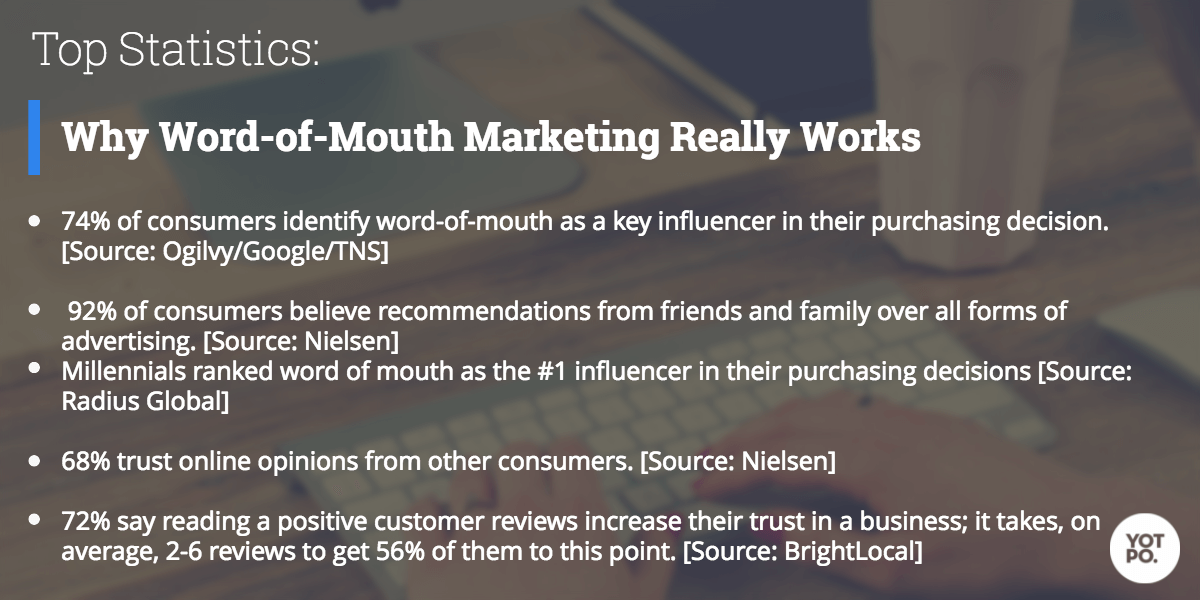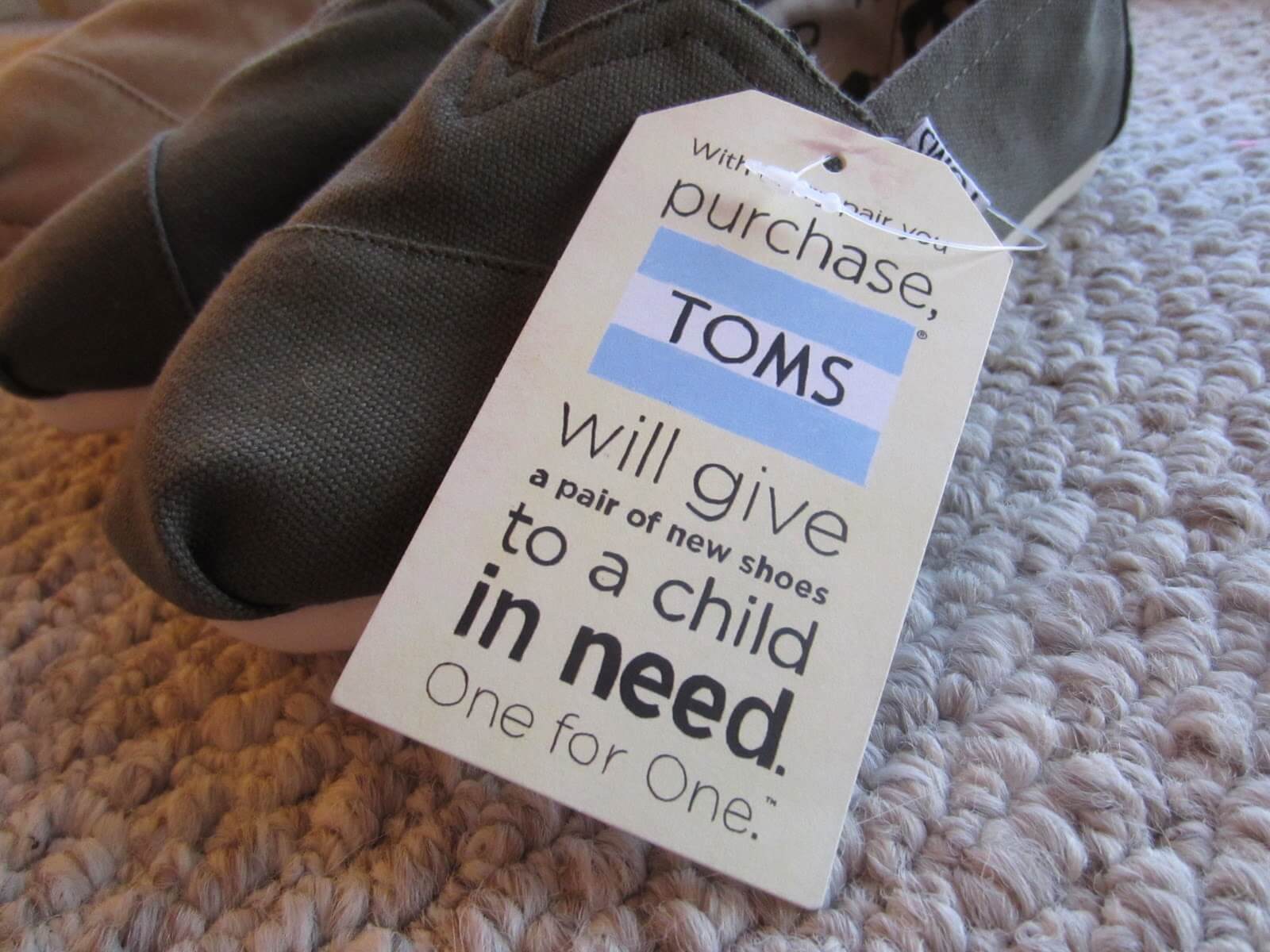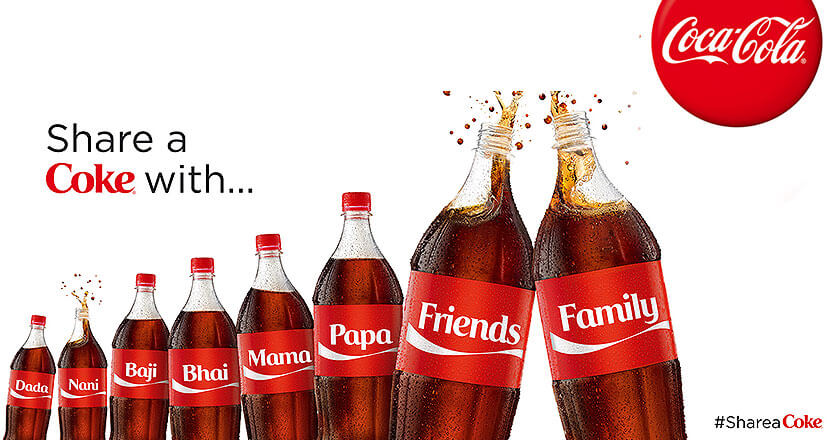True Or False? Social Media Is A Key Driver For Word-of-mouth Marketing.
Word of mouth marketing and testimonials are an extremely effective way to promote your products.
Let's start with the facts. 92% of consumers will believe a recommendation from friends and family over any other type of advertising. That simple statistic casually hides one of the most powerful truths in marketing: Your biggest marketing asset is your existing customer base
Today, many businesses spend millions on advertising to new audiences, while completely neglecting the marketing potential of their existing customers. And while there are many different ways to harness your existing user base, few are as powerful as word of mouth marketing, and that's the strategy we'll be discussing today.
What Is Word of Mouth Advertising?
Word-of-mouth advertising (WOM advertising), also called word of mouth marketing, is the process of actively influencing and encouraging organic word of mouth discussion about a brand, organization, resource, or event.
Word of mouth definition: Influencing and encouraging organic discussions about a brand, organization, resource, or event.
To put it most simply, word of mouth marketers and advertisers seek to create something worth talking about and then actively encourage people to talk about it.
As we noted earlier, people love referrals and they tend to trust the opinions of their friends when making purchasing decisions. Word of mouth advertising is essentially seeking to kickstart an exponential referral chain that drives continuous traffic, leads, and sales for the brand.
Need a "word of mouth" strategy? Try starting with a referral program
Learn more
Word of Mouth Advertising Statistics: Why Does WOM Work So Effectively?
While some customer marketing tactics require a strong pitch, when it comes to word of mouth advertising, the statistics speak for themselves.
Just take a look at a few of the top statistics, and it doesn't take long to see how powerful word-of-mouth marketing really is:

So what makes it work?
Essentially, it comes down to trust. People trust what others have to say, which means when they hear about something from a friend or previous consumer, they're more likely to buy. But there's more at work.
Studies by marketing expert Jonah Berger have found two driving factors that power WOM marketing content. These factors are social currency and triggers.
Top 2 Reasons Word-of-Mouth Marketing Works:
- Social Currency
- Triggers
Social currency relies on the idea of exclusivity. In short, we like to feel special. Hearing about an underground club or secret menu item triggers our need to belong to an exclusive group.
Insider knowledge gives us social currency that we then use to spread the word to other friends.
Accordingly, an easy way to encourage word of mouth discussion is through marketing strategies that pick up on the social currency factor, offering insider secrets or exclusive information (ex. secret menus). Triggers are a natural social mechanism that remind us about a brand or product even when we don't see advertising.
For example, imagine your friend told you about a special happy hour deal on Tuesdays at a bar near your house. On Tuesday, when another friend mentions grabbing drinks after work, you will be triggered to remember the place you heard about with Tuesday specials. Tuesday becomes the trigger amplifying the effect of WOMM. In this way, word of mouth can also be a way to improve existing customer engagement strategies.
Word of mouth marketing & user-generated content
Another reason why word-of-mouth marketing works is because of the same principles that marketing with user-generated content is so successful.
Word of mouth marketing and user-generated content marketing are closely related.
User-generated content is voluntarily created and shared by everyday consumers, while word of mouth is the organic sharing of information or opinions about a product, company, or brand, from one consumer to the other.
One powerful type of user-generated content is reviews — and getting customers to write reviews is one way to facilitate the spread of word-of-mouth marketing. When potential shoppers read reviews, it builds customer trust by showing them that a verified customer offers their endorsement of your brand.
Related post: Learn how to use consumer generated media to amplify your word-of-mouth marketing.
How to Build a Word of Mouth Marketing Strategy
Successful implementation of word of mouth campaigns can't be accomplished via cookie cutter tactics.
There is an inherently creative element to the process that must be artfully and uniquely applied to each brand.
As I mentioned earlier, word of mouth promotion tends to incorporate two key components:
- Create something buzz-worthy
- Encourage the buzz
In other words, word of mouth promotion doesn't simply attempt to get people excited about a business' logistics, daily operations, or profit model.
The key to a successful word of mouth marketing strategy is to either identify something about a brand that can generate organic buzz OR create something that will generate that buzz.
To find out how to do this effectively, look to successful word of mouth marketing examples for inspiration.
Top 3 Word-of-Mouth Marketing Examples
One of the best ways to build a successful strategy of your own is by looking at what worked for other brands.
TOMS: Creating organic buzz by doing good
As you are no doubt aware, TOMS became a famous, massively profitably shoe company thanks to the viral popularity of their One-for-One business model.

When you buy one pair of shoes from TOMS, one pair is also donated to a child in need of shoes. This model was touted and received as a form of consumer-driven charity, and as a result, the company exploded, reaching a valuation of over $600 million in 2014.
In the cold reality of hard numbers, the Alpargatas shoes TOMS sells retail for around $2-5 in South America, indicating an incredibly low manufacturing cost.
With a price point of $60, its fair to say that TOMS shoes' actual charity contributions are relatively marginal.
Despite this, TOMS realized that "company gives shoes to those in need every time you buy" made for a far more buzzworthy headline than "company donates money to poor people".
As a result, the company focused its branding around this buzzworthy portion of its business model, and then blitzed the media with its message, generating tons of news coverage and hundreds of thousands of backlinks.

While TOMS opted to build its business model around something it could make buzzworthy, this isn't an option for most businesses. Instead, these businesses have the opportunity to create something interesting that people will get excited about and then spread the word.
Chipotle: Creating WOM Buzz Through Storytelling
Casual dining chain Chipotle has somewhat distinguished itself being a national chain that sources its ingredients locally.
That said, "ingredients sourced locally" isn't necessary something that is going to blow up anyone's Facebook feed.
In order to spearhead word of mouth, Chipotle created a haunting video, with an accompanying iPhone app, depicting a dreary, over-processed world run by machinery.
The video and app combined have generated over 614 million media impressions, according to Cision, making it a major WOMM win for Chipotle.
Key Takeaway:
You can make anything newsworthy with the right story. While local sourcing isn't inherently newsworthy, the Chipotle marketing team made it newsworthy through a combination of art, storytelling, and a targeted media blitz.
Coca-cola "Share a Coke With Friends": Omnichannel WOM
Coca-cola's campaign asked for consumers to participate by sharing a personalized soda bottle with friends, in person and on social media.

Coca-cola even supported the campaign with events where consumers could create their own personalized Coke bottle.
Key Takeaway:
Social media makes digital WOM marketing much easier, but real WOM marketing happens both on and off the web.
Build omnichannel WOM marketing with campaigns that encourage users to integrate information they gain about your product on and off the web.
Learning from these brands:
The processes from these examples can be repeated by virtually any company looking to generate grassroots word of mouth coverage of their brand.
When coming up with word of mouth marketing ideas, it's important to see what worked for other successful brands.
Get ideas for your word of mouth marketing campaign by looking to successful brands who did it right.
Conclusion
Very few marketing strategies can match WOMM in terms of viral potential or cost-efficiency.
The right strategy can explode a company onto the scene for mere pennies, but it doesn't just happen by itself.
Word of mouth marketing requires a genuine and meaningful customer engagement with the target audience. It's a two-way participation.
Use the strategies we discussed here today, but remember that ultimately, it's meaningful connection, rather than technique, that motivates customers to become brand ambassadors.
True Or False? Social Media Is A Key Driver For Word-of-mouth Marketing.
Source: https://www.yotpo.com/resources/word-of-mouth-marketing/
Posted by: oldhamcopievere.blogspot.com

0 Response to "True Or False? Social Media Is A Key Driver For Word-of-mouth Marketing."
Post a Comment